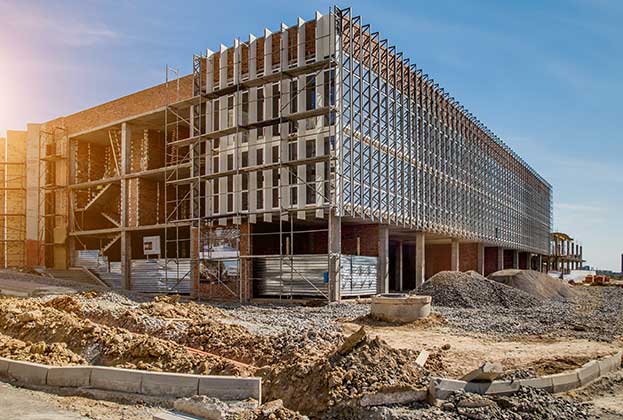Footfall recovery may be lagging, but basket spend on the up
Shopping centre (SC) footfall is yet to recover to pre-pandemic levels, with several markets showing -15–20% down on levels recorded in January 2020. However, basket values have increased in most countries we monitor; this is largely an inflationary impact rather than an increase in purchasing sentiment, but it does point to more purpose-driven consumerism.
The post-Covid bounceback in footfall seen in 2022 has slowed through the course of 2023 as the cost-of-living crisis has unfolded, yet growth remains in positive territory, albeit marginal in most markets. Spain and Portugal have bucked the trend, with year-on-year growth in footfall above 4% throughout the year. Visitors are a key factor here, accounting for more than 10% of turnover in schemes in tourist hotspots. Meanwhile, secondary shopping centres across Europe show signs of struggling to remain relevant, accelerating the polarisation between strong and weak assets and is reflected in a variation in vacancy and rental tone.
Rental changes: rebasing, adjustment & growth
The shopping centre rental picture highlights three themes that dictate the variations in different markets: rebasing, adjustment and growth.
Cities that have seen significant rebasing of prime rents over the last five years include Amsterdam, Berlin, London, Paris and Vienna, where rents have fallen 10–35%. This brings the rents of prime shopping centres in these cities down towards the benchmark average of €1,205 sqm in Q3 2023. This rebasing was being seen prior to the pandemic across a number of markets due to growing impact of online spend on retailer’s store strategies, which was then exacerbated by the pandemic.
A second group of cities, including Lisbon and Madrid, have seen a 5–10% fall in rental values in the last five years. With no further fall in the last 12 months, this could indicate that the adjustment in rents has been sufficient. Whether adjustment or rebasing, the rental levels now seen in these cities' shopping centres are likely to make them look more affordable and attractive to tenants.
Cities that have continued to exceed expectations in rental growth given the economic backdrop include Dublin and Milan, with around 5% growth in the last year. Bucharest has seen 5% growth consistently each year since 2018, with prime shopping centre rents now exceeding those recorded in Amsterdam and Stockholm. In Oslo, rents have increased by 18% over the past five years.

The flight to quality by occupiers widening the gap between prime and secondary
Shopping centre stock in both the Netherlands and Sweden are some of the highest in Europe on a per capita basis (0.3 sqm/0.5 sqm per capita), which may go some way to explaining the adjustment to rents seen in these countries. There is a loose correlation that more shopping centre supply tends to result in higher void rates and rental decline.
Irrespective of relative supply levels in each country, the long-term picture across Europe shows an increase in empty shops, with some schemes and retail brands struggling to keep pace with evolving consumer demand or are eclipsed by the growth of out-of-town retail formats and e-commerce. Twenty years ago, the average shopping centre vacancy rate in Europe was below 3%, but it doubles a decade later, with the UK being the only market with vacancy above 10%. In 2018, three more countries had seen vacancies in their largest cities reach double figures. By 2023, only three countries remain below 10%, with Germany, Netherlands, Finland and the UK now having voids above 15%. While these vacancy rates are reflective of total stock, a flight to quality means that vacancy for prime shopping centres is much lower.
The upward pressure in vacancy seen across the wider market is causing occupational and investment stress in markets with more mature provisions. This has been reflected in asset revaluations and the need for significant redevelopment; in recent years, a number of UK shopping centre assets have fallen in value by as much as 80% for the least relevant schemes. Value degradation for the most relevant, prime and dominant assets has been much less significant, in the region of 25%. Other European countries are also showing signs that stranded assets are a real proposition. However, the risk of empty shops still provides challenges to emerging markets where the rate of development has the potential to quickly saturate local markets and re-designate ‘prime’ supply. Hungary, for instance, has the highest growth in shopping centre rents in our benchmark, below average retail provision, and yet shopping centre vacancy is above the European average.
The nuance evidenced points to a trend that we are seeing unfold in almost all European markets and explains why we can record – at the same time in general terms – high rental growth and high voids in the same cities. This is the ‘flight to quality’ (F2Q), which is polarising the best and worst locations. F2Q sees additional demand for retail schemes in locations with the right offer in the right place and often creates an undersupply in the best pitches. However, it is clear from the limited pipeline of new shopping centre schemes across the block that investors are focussing primarily on repositioning, repurposing or redevelopment opportunities. More detail on this evolving trend can be found here.
Read the other articles within European Retail Market below
.jpg)



.jpg)


